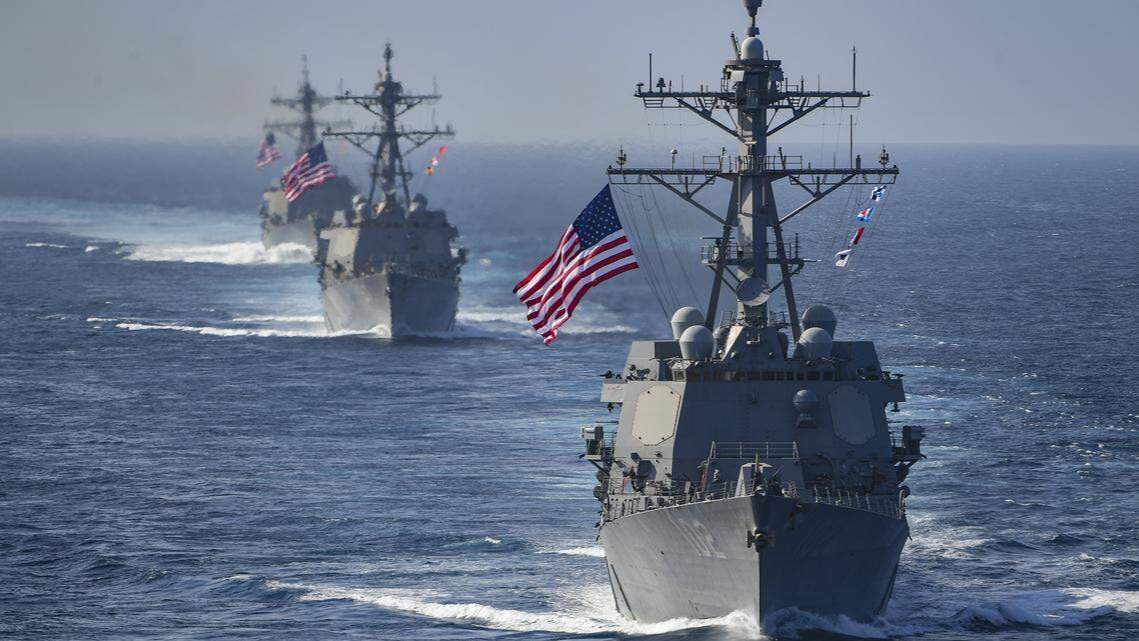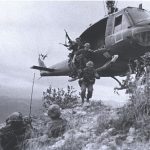Hell awaits the US – Venezuela takes up arms by Maduro’s order, everything ready for war – The 3 invasion scenarios

Maduro called for strengthening the defense so that “Venezuela is rendered impregnable”—”Imperialism seeks to restore lost military, economic, and cultural hegemony.”
Everything indicates that the countdown to a tough armed conflict in Latin America has begun.
While the US is reportedly elaborating on three scenarios for how to invade Venezuela, President Nicolas Maduro ordered Venezuela to move into a phase of armed defense against the Americans.
Maduro, who argues that his country is facing the most serious American threat in 100 years, declared a new era of resistance and sovereignty, sending the message that Venezuela will not succumb to American pressure.
Order for armed defense
President Maduro approved the proposals of the ruling party to transition to an armed struggle in the event of an American attack.
Specifically, he approved a plan for comprehensive defense and transition to armed struggle in case of an American attack.
“Within the framework of the strategic concept of the homeland’s comprehensive defense, a plan was approved to transition from non-armed struggle to armed struggle on a national and continental scale, in case Venezuela is attacked by the US empire,” Maduro stated during an emergency congress of the United Socialist Party of Venezuela (PSUV) and the party’s youth, broadcast live on the Venezolana de Television channel.
Maduro added that the plan foresees “transition to armed struggle to protect the territorial integrity, dignity, right to peace, and future of Venezuela.”
The people prepared to the maximum
Maduro stressed that the PSUV must immediately proceed with the implementation of the decision so that the people are maximally prepared for “resistance against the imperial psychological warfare and specific actions across the country.”
“The United Socialist Party of Venezuela must immediately proceed with their implementation, with the development of operational plans for every street and every community, so that our entire people—calmly, restrainedly, but with determination and courage—are at the highest level of readiness,” he stated at the United Socialist Party congress.
“The United States believes and is convinced that a new colonial era has arrived, an era of white race supremacy, and the peoples of the South must bow to the dominant North America,” Maduro declared, noting that “imperialism seeks to restore lost military, economic, and cultural hegemony.”
No subjugation
Maduro once again called for strengthening the defensive capacity so that “Venezuela is rendered impregnable,” as “the American empire continues its threats and psychological warfare for 12 weeks,” and pointed out that no one will deprive Venezuela of the “right to independence and life.” He also stressed that “the whole world looks to Venezuela as an example of a successful struggle for peace, preservation of its dignity, values, and principles.”
The country’s leader stated that “the PSUV congress will execute the approved decisions” and that the country will enter “a new era of peace, prosperity, and joy.”
Doubts as to whether anything serious will happen
At the same time, the party’s general secretary and Minister of Interior, Diosdado Cabello, who appeared alongside the president, expressed doubt that “anything serious will happen,” but called on citizens to be prepared for the worst.
Escalation between the US and Venezuela
In recent weeks, the United States has repeatedly used its armed forces to destroy vessels in the Caribbean Sea, which, according to their claims, were transporting drugs.
US authorities maintain that such operations are conducted within the framework of combating international crime and drug trafficking.
Secret CIA operations
The White House allowed the CIA to carry out secret operations in Venezuela aimed at destabilizing the Maduro government, while US Attorney General Pam Bondi announced a $50 million reward for information that could lead to his arrest, claiming that “Maduro uses terrorist organizations to transport drugs to the United States.”
Last week, Newsweek magazine, citing satellite images, reported that the US helicopter carrier Iwo Jima and its accompanying ships are located about 200 kilometers from La Orchila Island, where one of Venezuela’s key air bases and radars is situated.
Similarly, the Miami Herald newspaper wrote that the US might launch attacks against targets in the country in the coming days.
Commenting on this information, Donald Trump stated that the American armed forces are not planning an attack on Venezuela, while Secretary of State Marco Rubio characterized the information circulating in the media as false.
Maduro, for his part, has repeatedly stated that his country faces “the most serious threat of American invasion in the last 100 years.”

Maduro’s days are numbered
Also indicative are the statements of US President Donald Trump, who claimed that “Maduro’s days in power are numbered.”
When asked if Maduro’s days in the presidency of Venezuela are numbered, Trump replied: “I would say yes, I think so.”
New York Times: The three invasion scenarios
The administration of US President Donald Trump is reportedly studying three different plans for a possible military intervention in Venezuela, aimed at overthrowing President Nicolas Maduro, according to a report by the New York Times (NYT).
The first scenario foresees airstrikes against military targets, aiming to weaken the military’s support for Maduro and pressure him to leave the country. However, several analysts warn that such a move may have the opposite effect, rallying the people around the country’s leader.
The second option includes sending an elite team of Navy SEALs with the mission to capture or neutralize Maduro.
The third and broadest plan foresees the involvement of counter-terrorism forces to occupy strategic facilities—such as airports, oil wells, and critical infrastructure of the country—with the aim of destabilizing the regime.
Pressure from Rubio and Miller – Trump hesitates
According to the same report, several senior White House officials, including Secretary of State Marco Rubio and Deputy Chief of Staff Stephen Miller, are pushing for a military solution.
Despite these recommendations, Donald Trump appears cautious, fearing that a failed operation could lead to an embarrassing defeat or losses for American troops.
NYT sources report that the White House is not expected to make a final decision until the aircraft carrier USS Gerald Ford arrives in the Caribbean, which is expected in mid-November. Approximately 10,000 American soldiers are already deployed in the area, either on warships or at military bases in Puerto Rico.
The 5 Russian weapons Venezuela needs to face the US on equal terms
Geopolitical tension in Latin America is rising dangerously.
Following the concentration of American forces near Venezuela and reports that Washington is considering “aggressive scenarios” to overthrow Nicolas Maduro, the country’s Armed Forces have been placed on alert.
Despite displays of power with Su-30MK2 fighters, Venezuela’s limited firepower raises concerns about its ability to deter or counter US air and sea superiority.
According to a report by Military Watch Magazine, the Caracas government is considering urgent purchases of Russian weapon systems to immediately strengthen its defense.
Russia has made it clear that it is willing to supply Venezuela with the necessary weapons, even leaving open the transfer of Oreshnik and Kalibr missiles.
1. Bastion – Coastal defense system
The Bastion is one of the most successful examples of Russia’s “asymmetric defense.” It was designed to threaten large naval forces while remaining mobile and difficult to detect. It launches P-800 missiles at a speed of Mach 2.5 and has a range of up to 800 kilometers.
For Venezuela, which today relies almost exclusively on air-launched Kh-31A missiles, the acquisition of Bastion would multiply the country’s anti-ship defense capabilities, allowing strikes against American warships from a long distance without requiring aircraft participation. This is a low-cost but high-performance option that has already proven effective in Syria and Vietnam.
2. Buyan-M / Karakurt Class corvettes
Russia, having limited the production of large cruisers and destroyers, turned to the development of multi-role corvettes with capabilities comparable to much larger ships.
The Buyan-M (850 tons) and Karakurt (860 tons) can carry Kalibr, P-800, and the hypersonic Zircon missiles—the latter achieving speeds of Mach 9 and a range of up to 1,000 km.
The integration of such vessels into the Venezuelan fleet would be a game changer for the Navy, replacing the obsolete Western-origin ships. With the help of Russian technicians, the corvettes could become operationally ready in a short period of time, increasing the deterrent power along the country’s coasts.
3. Su-30M2 fighter aircraft
The Venezuelan Air Force currently possesses 22 Su-30MK2 fighters, the most powerful in the region, but in limited numbers. Moscow could provide Su-30M2s, of similar design, which are not widely used by Russian forces.
The addition of these aircraft would double Venezuela’s air power, while upgrades with AESA radars, AL-41F-1S engines, and R-77M missiles are foreseen for the future. Such a package would give the Su-30s the capability to confront American F/A-18 or F-15 fighters with confidence, overturning the hitherto absolute US air superiority in Latin America.
4. Kh-32 missile – the “nightmare weapon” of naval forces
The hypersonic Kh-32, an evolution of the Kh-22, is one of the most dangerous weapons in the Russian arsenal. With a speed of Mach 5, a range of 1,000 km, and a complex dive trajectory, it is extremely difficult to intercept even by Patriot or S-300 systems.
The integration of the Kh-32 into Venezuela’s Su-30s would mean that the aircraft could launch strikes against American ships without leaving their airspace. Such a capability would completely transform the country’s operational doctrine, making any American naval force in the Caribbean extremely vulnerable.
5. Improved Kilo Class submarines – the “black holes” of the oceans
Venezuela’s submarine fleet still relies on two old Type 209 German-origin submarines from the 1970s. The Russians could deliver Improved Kilo Class submarines—dubbed Black Hole Submarines in the West due to their silent operation.
These submarines can launch Kalibr, P-800, and Zircon missiles, offering strategic strike capability at distances of hundreds of kilometers. With low maintenance costs and already trained crews, Venezuela could radically strengthen its underwater defense within a few months.
Russia returns to Latin America
The potential supply of the above systems is not just a military development but also a clear political message. Moscow seeks to reestablish its presence in the Western Hemisphere, responding to American pressure in Ukraine and the Baltic with a “counterweight” in the Caribbean.
For Venezuela, cooperation with Russia offers a strategic shield, while for Russia, it serves as a means of power projection near the American coast. Washington, which is already closely monitoring these movements, knows that even a few high-tech Russian systems could change the balance of power in Latin America.
The possible delivery of Bastion, Su-30M2, Kh-32, Karakurt corvettes, and Kilo submarines to Venezuela would rapidly strengthen its defensive capabilities and significantly complicate any US military operation against it.
Latin America may evolve into the next arena of geostrategic confrontation, with Venezuela transforming into an advanced outpost of Russian power in the United States’ “backyard.”
www.bankingnews.gr
Οι απόψεις που εκφράζονται στα σχόλια των άρθρων δεν απηχούν κατ’ ανάγκη τις απόψεις της ιστοσελίδας μας, το οποίο ως εκ τούτου δεν φέρει καμία ευθύνη. Για τα άρθρα που αναδημοσιεύονται εδώ με πηγή, ουδεμία ευθύνη εκ του νόμου φέρουμε καθώς απηχούν αποκλειστικά τις απόψεις των συντακτών τους και δεν δεσμεύουν καθ’ οιονδήποτε τρόπο την ιστοσελίδα.




